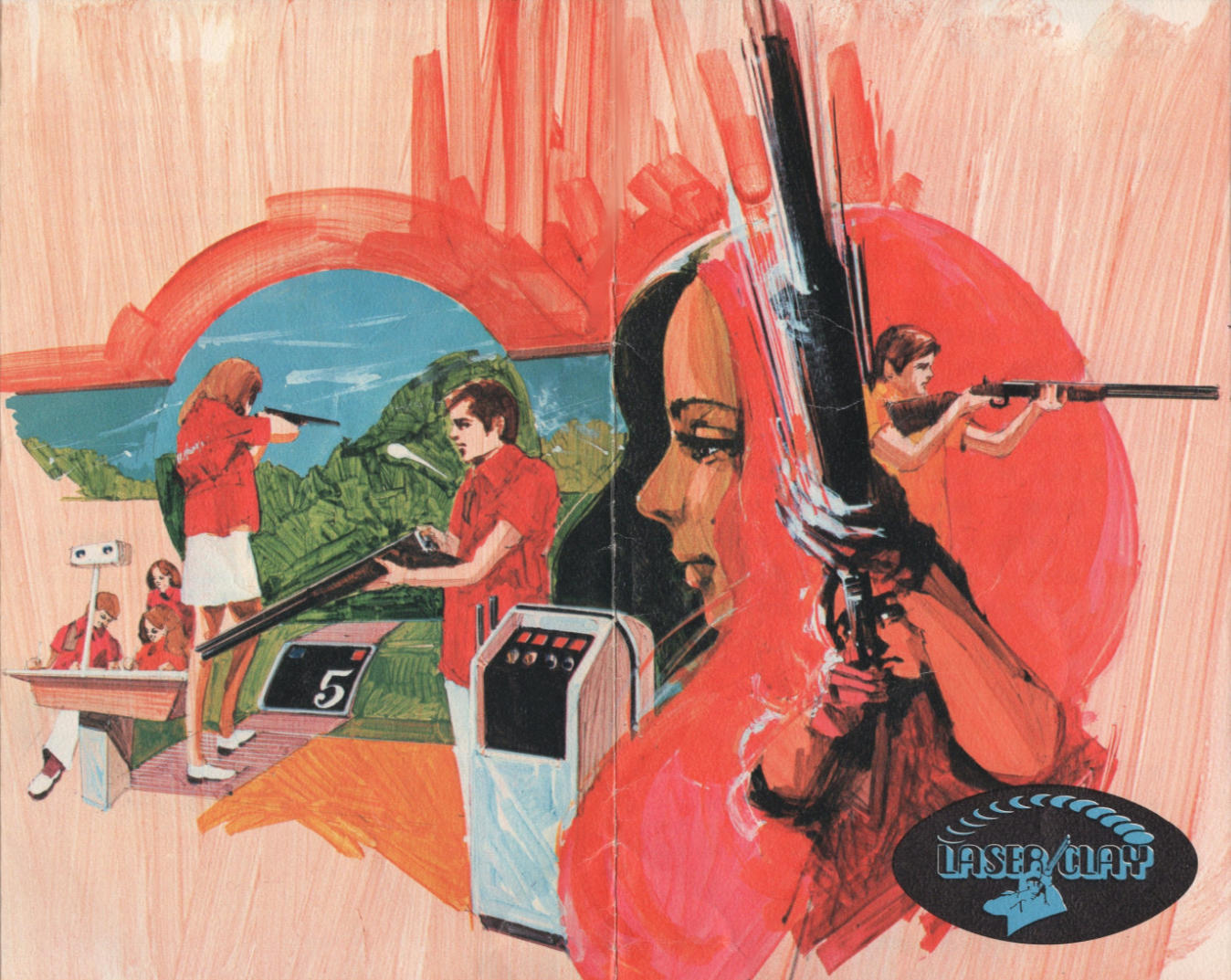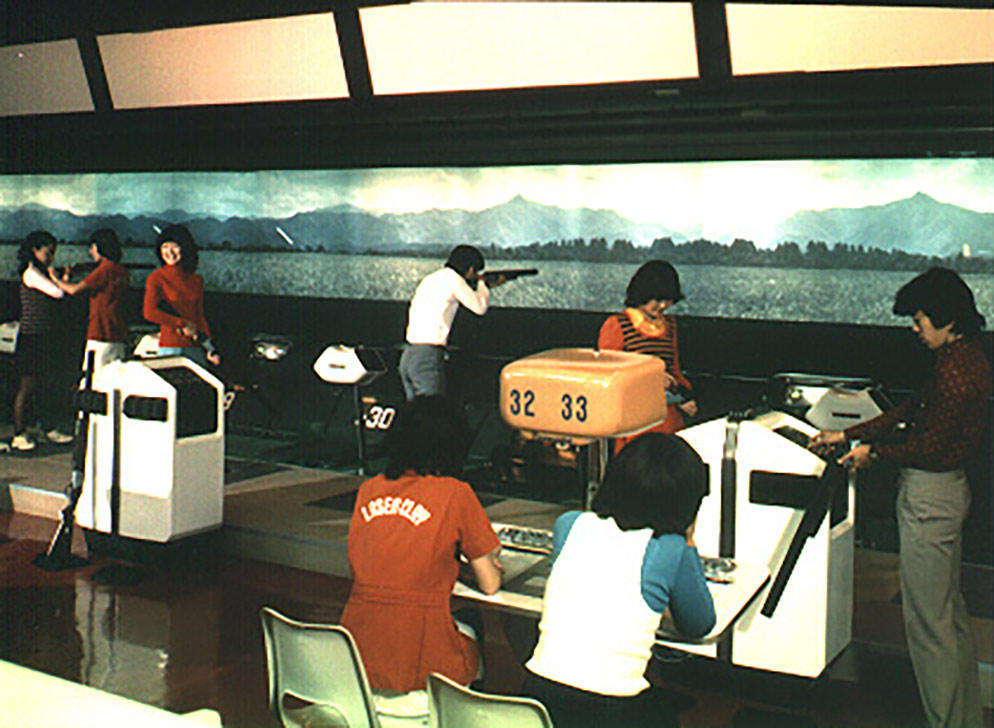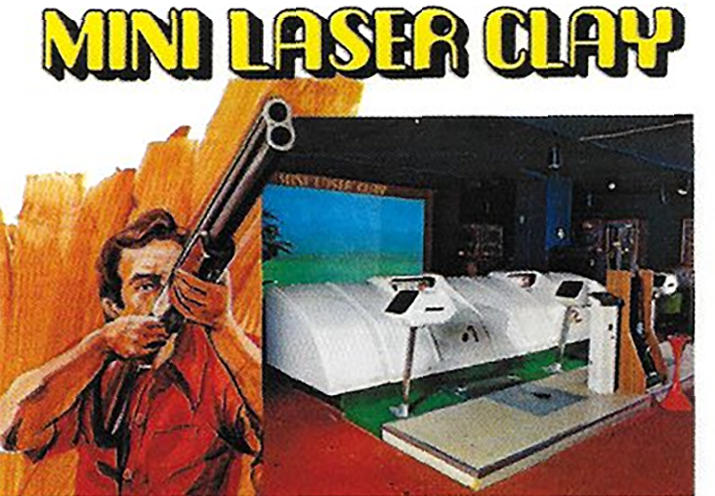Laser Clay
Nintendo Arcade, 1973

Having found huge success with their Kōsenjū SP light gun toys in 1970, Nintendo president Hiroshi Yamauchi was interested in scaling up the technology to capitalise on the popularity of clay pigeon shooting.
The result were the Laser Clay shooting galleries.
Laser Clay (1973)

The player is armed with a realistic rifle, which the player must load and cock after each shot.
A few metres away, a landscape is projected onto a screen. When the player is ready, they launch a clay pigeon using a foot-activated switch. The pigeon heads in a random direction, projected against the landscape. The player takes aim and shoots it down.
The game consists of 20 rounds, with one pigeon fired in each round. The player has two shots per round. Points are scored based on how many shots the player takes to shoot down the pigeon:
- First Hit (F.H.): 2 points
- Second Hit (S.H.): 1 point
- Miss (M): 0 points
Additional "Service Points" are added for successful consecutive hits.
If the player shoots the 20th bird, a "Service Bird" is launched, rewarding an extra 2 points.
Setting up a new venture
In the 1960s, bowling had been a popular sport in Japan, and many bowling alleys were built. However, it proved to be a short-lived fad, and many alleys were struggling and faced closure.
The Laser Clay system required a lot of space to set up. Nintendo set up three successful test locations in bowling alleys, and sought to sell their system to others. Seeing an opportunity to boost their revenue, many alleys signed up. Nintendo invested heavily in production, and even set up a new subsidiary, Nintendo Leisure System Co., Ltd.
However, the 1973 oil crisis led to many orders being cancelled, throwing Nintendo (and many other leisure companies) into jeopardy.
Mini Laser Clay (1974)

Nintendo produced a smaller version of the Laser Clay system called Mini Laser Clay in 1984 to try and expand their leisure business into locations other than bowling alleys. While there are two rifles attached to the unit, some sources state it could be played with up to four players.
Players paid ¥100 for 10 shots. When the light turns blue, use the foot switch to launch your clay pigeon and shoot it down. As with the full size version, players would have to reload their gun with fake rounds between shots.
A similar unit named Laser Clay Twin has also been seen. This appears to be a modified version of the Mini Laser Clay, though it's unclear when (or if) it was officially released.
Nintendo Leisure System Co., Ltd.

In 1973, Nintendo set up a subsidiary to manage the production and distribution of its Laser Clay business. This subsidiary was called Nintendo Leisure System Co., Ltd.
Following the Laser Clay system, Nintendo Leisure System began distributing casino gaming tables and other arcade amusements.
Nintendo continued using the name on its products until the end of the 1970s. Several of their earliest microprocessor-based arcade games, such as Computer Othello and Space Fever were also released under the Nintendo Leisure System name. The subsidiary itself was closed down in 1983, shortly after the announcement of the Family Computer.